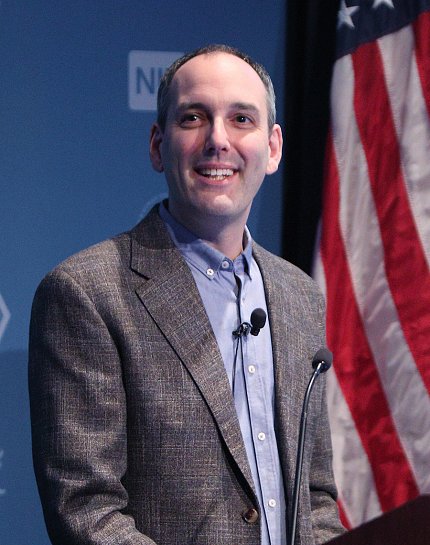Patients with Rare Genetic Mutation Lead to Insights on Touch, Pain

Photo: Chia-Chi Charlie Chang
The medical staff of two clinics, co-sponsored by NIH for children with rare or undiagnosed neuromuscular disorders, had a mystery on their hands.
Two patients had shown a similar, rare set of symptoms including skeletal abnormalities such as progressive scoliosis and contracted joints in their hands and feet; problems detecting where their body is located in space (known as proprioception); and difficulties with other tactile senses. They had even more difficulty with tasks such as walking or reaching out to grasp an item, if their eyes were blindfolded. Cognitively, they were normal. Standard diagnoses and explanations had been elusive.
In a recent lecture in NCCIH’s Integrative Medicine Research Lecture Series, Dr. Alexander Chesler, a Stadtman investigator in the NCCIH intramural program, highlighted how he and some NIH colleagues cracked this mystery and in the process found out more about the molecular and neural underpinnings of touch and pain.
“We found that two bases [i.e., genetic components of DNA] out of the 3 billion or so in the human genome, when changed, can result in this dramatic phenotype,” he said. A phenotype consists of a person’s characteristics that come from the expression of genes.
NINDS senior investigator Dr. Carsten Bönnemann brought one of these young patients to the Clinical Center for evaluation. He introduced her to Chesler, because of the latter’s research focus on mechanosensation (the ability to detect mechanical stimuli). A collaborative study resulted, with a second young patient coming to NIH and researchers and clinicians joining from the CC’s rehabilitation medicine department and several other institutions in the U.S. and Canada.
Bönnemann identified mutations within a gene called Piezo2 that produces a protein known to function in mechanosensation. The team performed genetic sequencing analysis in the patients, as well as sensory tests (such as different kinds of stimuli to the skin), a reaching-out task, functional brain imaging and in vitro and messenger RNA assays.

Photo: Chia-Chi Charlie Chang
Explaining his role, Chesler told the Lipsett Amphitheater audience that mechanosensation is about activating biological detectors called “mechanically gated ion channels”—structures within the cellular membrane of sensory neurons that let ions move into or out of cells. Mechanical stimuli physically open these channels, which produces a small electrical current from ion movement. The brain interprets that current as touch or another mechanical sensation.
The Piezo2 gene qualifies as this type of ion channel, Chesler thought. Could mutations in it interfere with the ability to open up and produce the current? He and his team tested this hypothesis in the laboratory using sensory cells taken from the two patients. When they poked the cells and measured the resulting electrical current, indeed there was a significant drop in the level of current.
Among the authors’ other findings were that while the patients had difficulty feeling certain kinds of mechanosensations, some types—such as pain, pressure, itch and temperature—were unaffected. Genetic testing of their family members (none of whom had these symptoms) showed that these Piezo2 mutations were hereditary and recessive.
When the study was reported in the New England Journal of Medicine in 2016, the authors began to receive word of other cases. Since then, four additional patients have been evaluated at the CC, with more to come. Bönnemann continues to work with this population to determine ways to help treat their symptoms.
Chesler marveled at how great a detective the human sensory system is: “Given how much information our spinal cord and brain are bombarded with at any given moment, it’s quite an amazing feat that we could have these specific sensations and tell them apart with specific detail,” he said. “It’s an amazing system.”
He cautioned, however, that “there’s much that we don’t know.” Chesler plans to continue dissecting the mechanosensory network, a line of research that has implications for better understanding of pain, a top NCCIH research priority area. Another benefit would be to inform future treatments and therapies for this rare genetic medical issue.
The full lecture is available at https://videocast.nih.gov/Summary.asp?Live=27286&bhcp=1.
